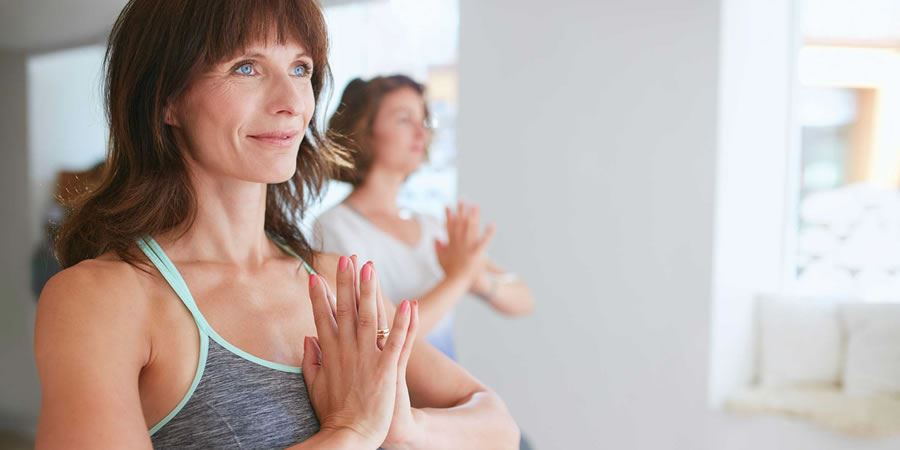Pilates begins the ‘healing’ process by building a solid foundation to work from, strengthening the body from the inside out. Beginning with the stabilization of the pelvis. If our foundation is solid then the fun and true work of Pilates can begin – to safely work the whole body.
Why is Pilates good for menopause?
Menopause is experienced in so many different ways by each individual body. Muscle fatigue, loss of strength, aches and pains, difficulty focusing, mood changes, hot flashes, to name a few. If guided properly, Pilates can help you physically improve your imbalances and bring you into correct alignment helping alleviate muscle aches and pains associated with daily tasks as well as menopause. Pilates strengthens from the inside out, meaning the deep core/postural muscles begin to function correctly and thus enabling you to work the periphery (shoulders, arms, legs, etc.), Working this way relives chronic weaknesses that can be the cause of the aches and pains. Because of the potential muscle loss experienced during menopause it’s important to keep moving and get the blood and oxygen flowing throughout your body.
But what about the non-physical shifts? Pilates also takes complete concentration on the details of movement and breath. Taking time 1 -3 hours a week to ‘selfishly’ address your own body is so vitally important to a sound mind. Menopause can be overwhelming at times and Pilates can help quiet the mind and strengthen the mind-body connection.
What do I do first?
Make a commitment and create a routine for yourself. If you’re struggling to get motivated, signing up for a class or session will help hold you accountable. Create a schedule and give it time to become habit. You’ve got to time it right for you. What time of day do you feel best moving? Some like an early morning to get up, move and have the rest of the day. Others need time to warm up so maybe noon is a better time for you. If you’re working and only have evenings then the decision is made for you. But whatever time of day works for you, stick with it and give your body time to get past the basics. Pilates is incredibly rewarding as you can accomplish a lot in a relatively small amount of time. But you have to stick with it!
Choosing a Pilates studio and new daily or weekly routine can be daunting. How do you choose what type of class to join? How do you choose an instructor?
To help you choose, there are two different styles of Pilates:
Classical, which follows Joseph Pilates’ original exercises and a specific order, is a systematic and integrative method using original pieces of apparatus, making it a tried and tested way to effectively build a strong foundation.
Contemporary, still based on Joseph Pilates work, is a style that has been added to or modified by someone other that Joseph himself. It is heavily influenced by the physical therapy community as well as the creativity of the instructor teaching.
The choice of classical and contemporary is personal. I encourage anyone starting their Pilates journey to seek out both. Not all classes and instructors are created equal. We are all different in our likes and ways we like to move and work. An instructor’s personality or style of teaching can be a big factor in determining whether or not you enjoy the workout. Just because your friend loves an instructor doesn’t mean you will! There are a lot of Pilates instructors out there and we each bring something different to the table.
The key is consistency!
“The Pilates Method teaches you to be in control of your body, not at its mercy”.
Joseph Pilates
Source: https://www.beingeve.net/fitness/goodness-practicing-pilates-menopause








